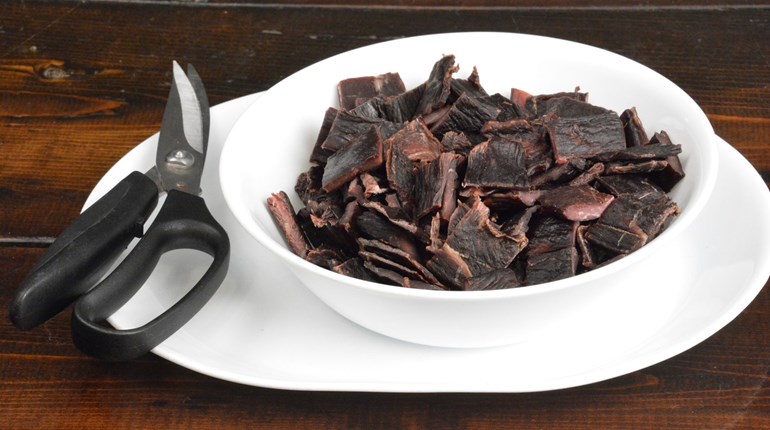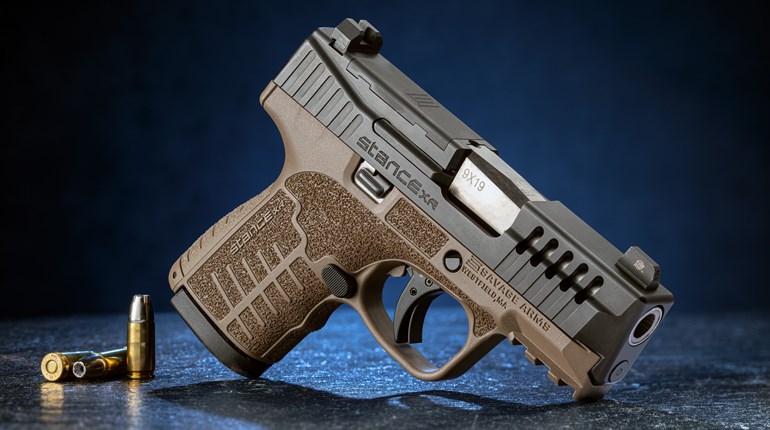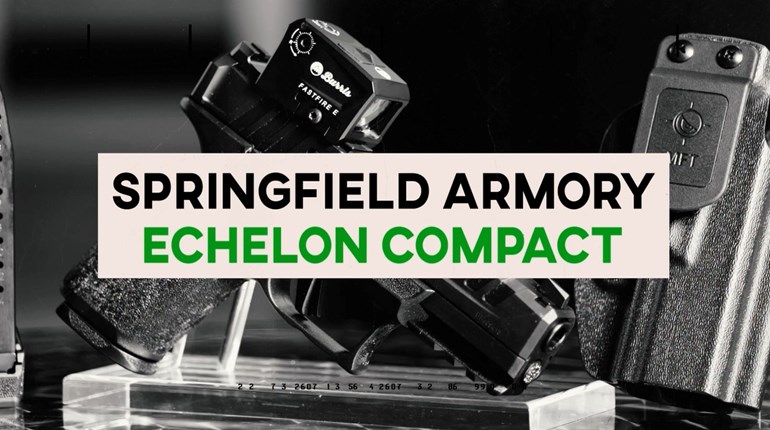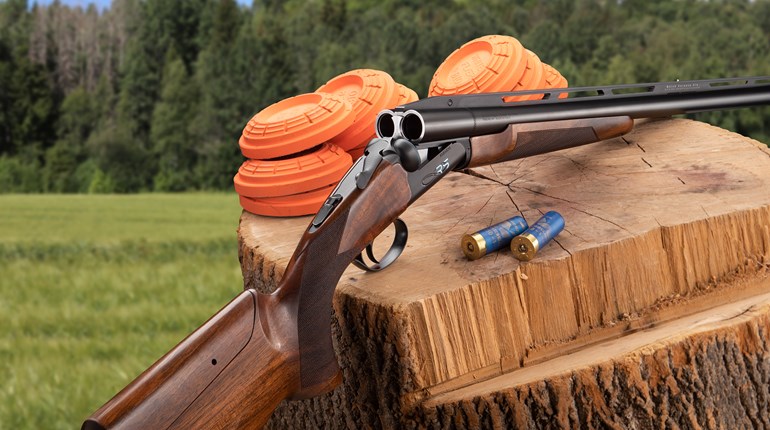
There are certain unwritten rules of gunwriting; things that are simply “expected” from any family member. For example, when writing about bullpup firearms you must say: “With the bullpup design, you either love it—or you hate it.” At the threat of expulsion from the gunwriters’ guild, I am going to forego that statement and risk banishment to the wastelands. It’s much too fluid to ever support such a definitive statement.
I usually suffer no shortage of “shooting buddies” when I provide the ammo. Even in this time of ammo shortages, we hammered a lot of bullets down the barrel of the interesting, new Springfield Armory Hellion bullpup. Invariably, when I handed the gun to a new shooter, he would look it over for a few minutes, then hand it back. “Man, I don’t know. This thing is just weird; nothing is in the right place. I am not so sure I am going to like this bullpuppy thing.”
Then I hand them some ammo. Most come back with the barrel hot and a new attitude. “Man, I love this thing. I gotta have one!”
That’s the truth about the love/hate thing with bullpups. It’s defined by how much you have actually shot one.
A bullpup is a very efficient design where formerly wasted space is utilized. The trigger is forward of the receiver and uses a linkage system. As a result, bullpup-style firearms often have notoriously poor trigger pulls. The receiver is beside the shooter’s head when shooting and the magazine is behind the grip. The ejection port is just ahead of the shooter’s face. The compact design allows a short, handy firearm, even with a 16-inch barrel. With an overall length of just 28.25 inches, this is a handy firearm that in many ways is not unlike a short-barrel rifle, but without the need to beg the government for permission to own it.
The bullpup design has found favor with a lot of the world’s militaries, as the shorter guns are easier to pack and ship, since they take up less room. The compact firearms are easier to use in a vehicle, helicopter or in close quarters. These same design features make the bullpup a good choice for home defense. The shorter overall design is easier to maneuver inside the generally tight quarters of a building.
If you are a longtime AR-15 shooter, then there will be a learning curve with the Hellion. The first time you shoot it, almost nothing is where it should be. But, that passes quickly, and it didn’t take any of us long before we were running this gun well on various drills. All recoil is directly back to the butt, which is just inches behind the bolt. With this design, the recoil is straight back and the squat design has the pivot point near the rear, so the gun will not roll up like a full-size rifle. To borrow a misused phrase from pistol shooters, this gun shoots “flat” (meaning little muzzle rise.)
This makes it fast for CQB-type scenarios. We ran a lot of close distance drills at 5, 10 and 20 yards. Most shooters turned their best times ever. Scores? Well, not so much. The issue is that an optic, but particularly a traditional-style magnified, tube scope sits high over the bore. With an offset of 4.3 inches, center-of-the-bore to center-of- the-optic (compared with 2.7 inches for most AR-pattern firearms), it was difficult to make precision shots at close range. Once the shooter understood the large offset and compensated, the problem got better, but never entirely went away. This huge offset will also change the trajectory relative to the line-of-sight over distance, so it must be factored in to any calculations made for long-range shooting.

One of the great features of this rifle is that it is truly ambidextrous. Unlike most “ambi” guns where the controls work on both sides, but the left-hand shooter suffers from hot, empty brass flying past his face, the Hellion will spit the hot empties from either side.
The Hellion is based on the VHS-2 bullpup rifle used by the Croatian armed forces. This semi-auto version has parts made in Croatia which are imported and assembled in the U.S. The gun makes use of polymer and metal in its engineering. It comes with flip-up sights and a full rail for mounting optics. It will take any AR-15 grip and comes with one from Bravo Company called BCM Gunfighter Mod 3 grip. Cool name. The stock adjusts through five positions and has about 2 inches of adjustment to allow for a length-of-pull from 16 to 18 inches. While this is a rather long length-of-pull in conventional long guns, in the bullpup design it seems to work well.
The polymer handguard has three slots for M-Lok attachments at each of the 3-, 6- and 9-o’clock positions. The Hellion takes standard AR-15 magazines, which are inserted behind the trigger in a mag well about halfway between the grip and the buttplate. The gun comes with a single Magpul P-Mag. The polymer P-Mags would stick and usually had to be pulled from the gun during reloads. Metal magazines dropped free without argument.

The release for the magazine is a lever behind the mag well that is pushed to release the mag. It’s intuitive to use, once you remember where the magazine is located. For most of us who are attuned to an AR-15, the first time you run to bolt lock and need a mag change will be a “What the hell???” moment. I guarantee it. But, as with anything, it’s a matter of practice. Once used to the gun, operations like mag changes go smoothly. I think that with a bit more practice and different magazines, the times would be about the same.
 The non-reciprocating charging handle sits under the Picatinny rail. It’s spring-loaded so that it returns to center and out of the way, but can pivot to either side to charge the gun right- or left-handed. There is a tab behind the handle that will lock it in place to use as a forward assist. The bolt release is behind the magazine on the bottom of the gun and is pulled back to allow the bolt to fly forward. A two-position safety sits behind and above the trigger and is a bit awkward to use at first. The safety uses pictograms with a white X-ed out bullet for safe and a red one for fire. It required very little getting used to.
The non-reciprocating charging handle sits under the Picatinny rail. It’s spring-loaded so that it returns to center and out of the way, but can pivot to either side to charge the gun right- or left-handed. There is a tab behind the handle that will lock it in place to use as a forward assist. The bolt release is behind the magazine on the bottom of the gun and is pulled back to allow the bolt to fly forward. A two-position safety sits behind and above the trigger and is a bit awkward to use at first. The safety uses pictograms with a white X-ed out bullet for safe and a red one for fire. It required very little getting used to.
Its 16-inch barrel is hammer forged, has a 1:7-inch twist rate and a Melonite coating. The muzzle is threaded and is fitted with a four-prong flash hider. The Hellion features a two-position adjustable gas block with the “S” position for use with a suppressor.
As mentioned, the rifle is fully ambidextrous with all controls. Switching sides for ejection is not as complicated if you follow the manual. The gun is fieldstripped and the bolt head is reversed 180 degrees. Then, the cheek piece is raised up to reveal a small lock on the dustcover, which is switched to the other side. Now that I have done it a few times, it only takes me a couple of minutes, even if I drop the firing pin in the snow.
There are QD mounts and eyes for snaps both sides for easy addition of a sling. The trigger? It’s a bullpup—it’s not going to rival the trigger on my precision rifles, but as bullpups go, this one is decent enough. The two-stage trigger has a long take-up until you hit a hard wall. From there the trigger is a little mushy, but breaks relatively cleanly. There is a bit more overtravel than I would like. The take-up requires 2.5 pounds before you hit the hard stop. Total trigger pull weight is 7 pounds, 5 ounces.
It might be hard to win a benchrest contest with this trigger, but then again, this is not a benchrest rifle. In fact, it is quite awkward to shoot from the bench, which, along with the trigger, no doubt opened up the groups in our accuracy testing. The Hellion shot pretty well at 100 yards, but I had a nagging feeling it can do better. The rifle, at times, demonstrated that it is capable of very good accuracy, but extracting that accuracy is difficult for the shooter.
Then again, this is not a long-range precision firearm. It’s made for shooting at relatively short ranges, lightning fast, if needed. With a 16-inch barrel, it is fully capable at longer distances and I would not hesitate to engage targets at 300 yards or even out to 500 yards. But, I’ll probably aim for center mass, not head shots.
Several of us tried the Hellion doing drills. The first day was brutally cold and it was hard to even feel our trigger fingers, yet, once we understood the hold-over, we all shot it very well. We shot the failure drill and 2-2-2 drills at 5 and 10 yards and turned in some amazingly good times. Digging the brass out of a foot of fresh snow added to the joy.
The gun ran pretty much perfectly with a wide range of 5.56 NATO and .223 Rem. ammunition. The only issue was one failure to eject with a lightly loaded handload early in the test. This was 100 percent an ammunition issue, and several dozen of the same handloads later ran without issue.
As one shooter said about the Hellion at the end of the first shooting session, “I don’t hate it.” Love comes more slowly for him, but I think it’s assured.





































